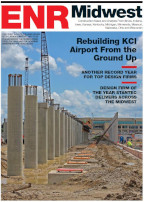 |
| Terminal Woes. Bids are scarce and over estimate for new contracts. |
The beleaguered expansion of Miami International Airport’s north terminal suffered another setback this month when bids for two contracts came in far over budget. The mile-long terminal, originally estimated at $900 million, is now estimated to cost almost $1 billion more than that.
Five contracts were set to be awarded on a .75-mile-long stretch between concourses B and D. But Sacramento-based MCM Construction submitted the only bids for completion of the terminal shell and for finishes. Together, the bids came in $323 million over the estimate of $90 million for the two contracts.
Airport officials will meet with MCM in hopes of negotiating a reasonable price. “[MCM] indicated that they have some serious issues with their bid,” says John Cosper, deputy director of capital improvements for the Miami-Dade Aviation Department. The B to D section consists mostly of partially completed work. Cosper says that MCM may have misunderstood what work needs to be redone versus what simply needs to be finished. Such scope issues could have been avoided through more bidders, he adds. “We only had single bidders for four out of five projects.” Cosper attributes the lack of bidders to the project’s troubled past. “If we can show that contractors will get paid on time, we can overcome the credibility issue,” he says.
When American Airlines ceded oversight of the job to the aviation department in 2005, there was a backlog of $170 million in subcontractor claims. Aviation officials have settled $90 million worth of the claims to date.
Aviation officials have replaced American’s construction manager, a joint venture of Austin Commercial and Turner Corp., with a joint venture of Odebrecht Construction, Coral Gables, Fla., and Parsons Transportation Group, a division of Parsons Corp., Pasadena, Calif. The key to getting the job back on track will be in the sequencing and sizing of the contracts, says David Peebles, director of business development for Odebrecht. “They had a lot of small packages that they were trying to piece together like a puzzle,” he says. “We are trying to integrate those packages and see how we can get a uniform line of responsibility.”
(Photo courtesy of Miami-Dade Aviation Department/Sari Jayne Koshetz)
